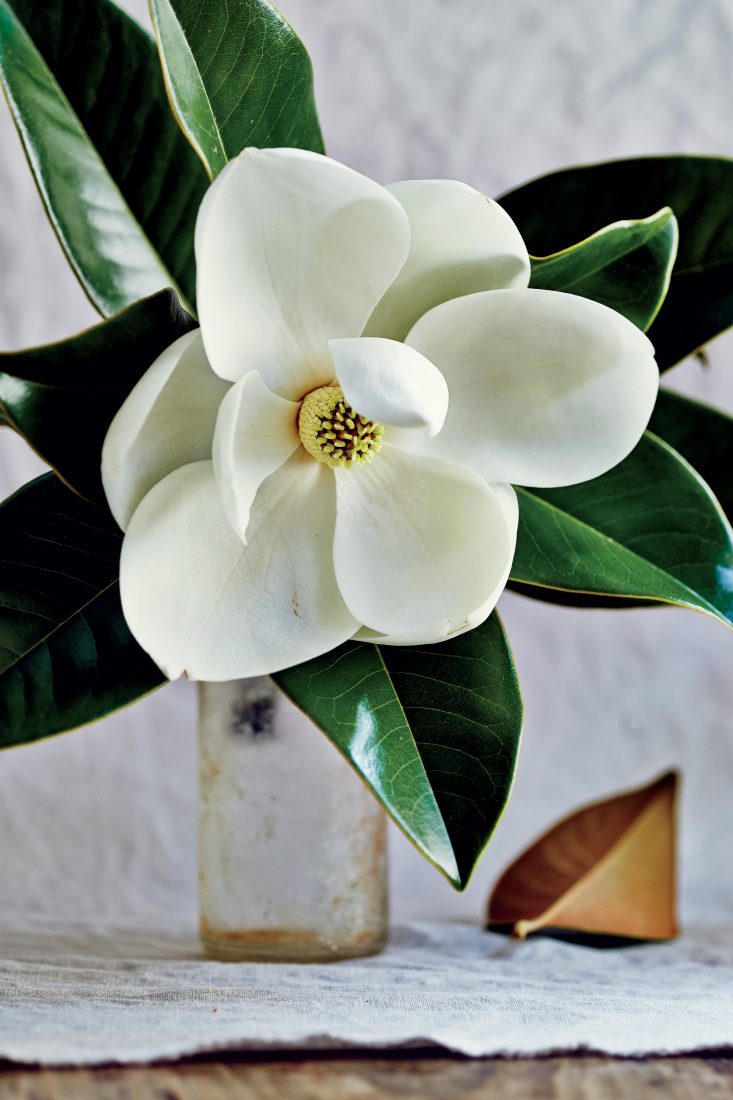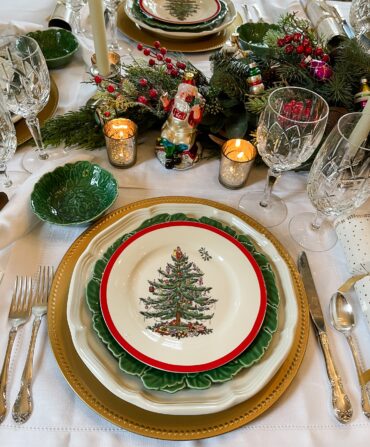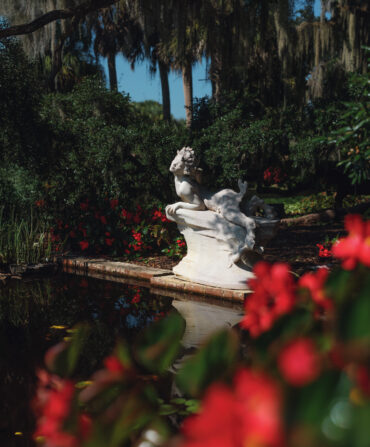When I was a little girl in Virginia, a giant magnolia tree stood right outside our second-story kitchen window, with branches sturdy enough that I could climb up and see my mom making dinner. If I climbed a little higher, I had a bird’s-eye view of the garden and the neighborhood. My dad even remembers me at around age seven, singing “God Bless America” at the top of my lungs, swinging my legs from my favorite branch. Later, when I moved to Charleston, I was dumbfounded by the sheer number of the trees and their blooms, as big as serving platters and drenched with fragrance, at every turn during the summer. I’m still amazed by them.

Beyond the classic Magnolia grandiflora—a species native to the United States otherwise known as the Southern magnolia—there are dozens of varieties of magnolias, however, that feature entirely different colors, blooms, and sizes. The plant company Monrovia alone grows nineteen varieties. “I’ve seen lots of stories that talk about the trees being very ancient, even existing before bees,” says Georgia Clay, Monrovia’s plants manager. There are eighty varieties worldwide and the whole genus is so old it can be traced to fossil records, though our modern lovelies are mostly native to Asia and the southeastern United States.
Among the Monrovia offerings, three deciduous varieties stand out for their distinctively different good looks. So if you’re looking for a new harbinger of spring, consider the following.
Many folks grow this example as a shrub, but it is actually very much a tree, developed from the Loebner Magnolia hybrid in 1939 and named after the botanist Elmer Drew Merrill in 1952. The blooms are shaped like stars and highly fragrant, which means they’re great for cutting and bringing inside in spring.

Jury Magnolias are hybrids of tulip magnolias developed in New Zealand by Mark Jury, with colors that range from light pink to a deep plum. The Felix Jury, named after Jury’s father, features voluminous, shockingly hot pink blooms that look a little like roses perched on the branches. The showstopping, up-to-twelve-inch flowers are also heavily fragrant.

A yellow magnolia? Yep. This particular version of the Magnolia liliiflora (which traces its roots to the Yunnan province in China) was first developed by researchers at the Brooklyn Botanic Garden and can grow up to forty feet tall.








